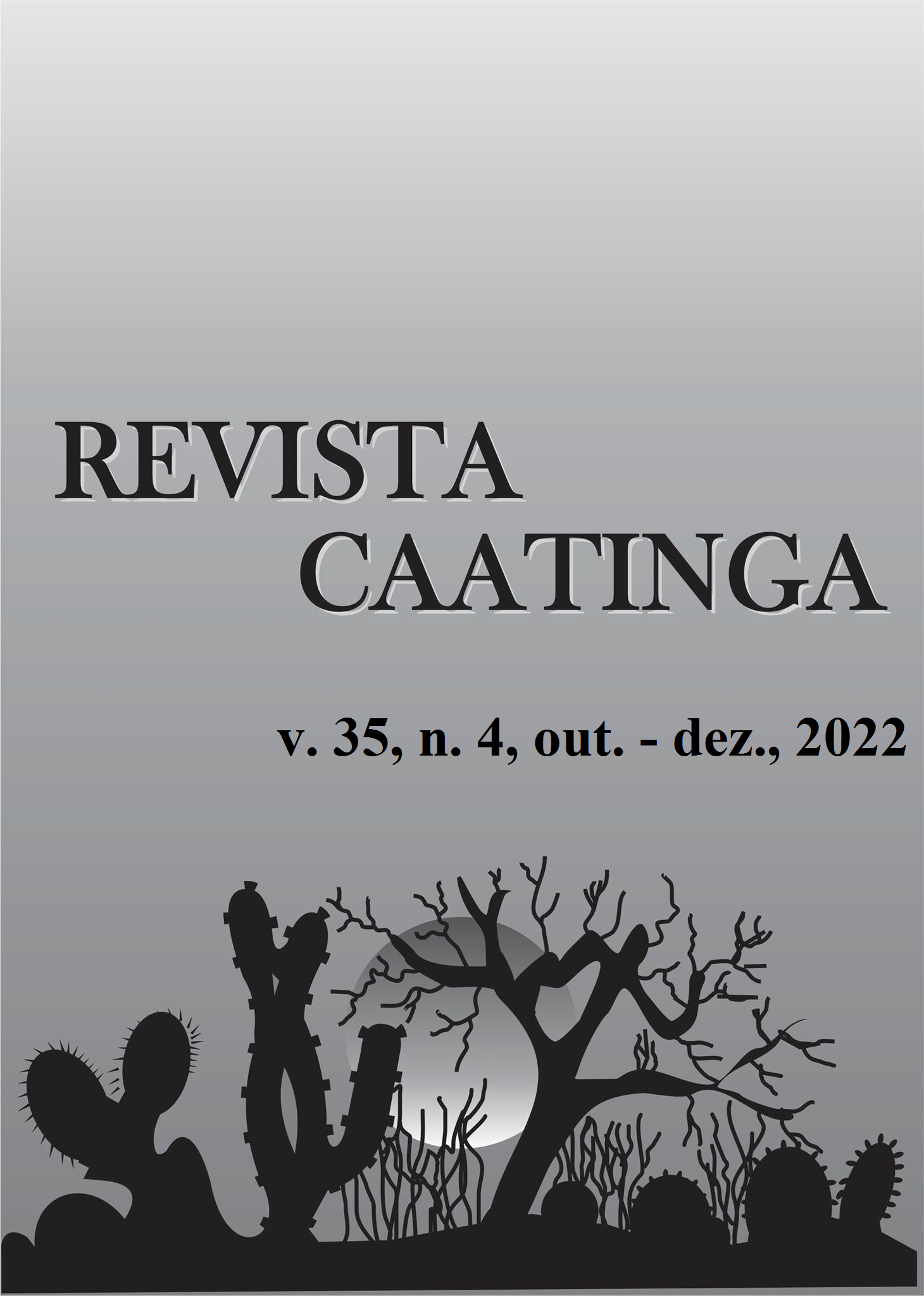TEMPO DE COLHEITA COMO MODULADOR DE FITOQUÍMICOS EM CULTIVARES DE BATATA DOCE PARA A INDÚSTRIA
DOI:
https://doi.org/10.1590/1983-21252022v35n423rcPalavras-chave:
Ipomoea batatas (L.) Lam. Escurecimento. Carotenóides. Compostos fenólicos.Resumo
Como alimento fresco, a batata-doce se destaca pelo sabor e aparência. Na indústria, é valorizado por seu teor de amido e açúcar. Em ambos os cenários, muita atenção tem sido dada à composição dos compostos bioativos. A aplicação de estresses abióticos parece induzir uma superprodução desses compostos em algumas hortaliças. O objetivo foi examinar a influência da época de colheita na síntese e acúmulo de compostos bioativos em variedades de batata-doce minimamente processadas com diferentes cores de polpa. As cultivares de batata-doce: Beterraba, Jerimum, Mãe de Família Roxa e BRS Cuia foram colhidas aos 120, 150 e 180 dias após o plantio, submetidas ao processamento mínimo e armazenadas a 5 ºC por 10 dias. A época mais recomendada para a colheita da batata-doce em condições semi-áridas para a indústria de processamento mínimo foi entre 150 e 180 dias, período em que a batata-doce apresentou melhor qualidade para consumo in natura em destaque para 'Mãe de Família Roxa' e 'Jerimum'. A ‘BRS Cuia’ colhida aos 120 dias apresentou os maiores teores de compostos fenólicos, as maiores atividades das enzimas polifenoloxidase e peroxidase e os sintomas de escurecimento mais intensos, podendo ser utilizado como matéria-prima para a extração de compostos fenólicos de interesse, além do amido. A ‘Beterraba’ apresentou baixos valores de açúcar, tornando-os desfavoráveis para consumo in natura ou processamento mínimo. No entanto, esta cultivar também apresentou um alto teor de carotenóides, tornando-os biofábricas para as indústrias alimentícia e farmacêutica.
Downloads
Referências
ALBUQUERQUE, J. R. T. et al. Quality of sweet potato cultivars planted harvested at different times of two seasons. Australian Journal of Crop Science, 12: 898-904, 2018.
ALMEIDA, S. L. D. et al. Polyphenol oxidase and Peroxidase Enzyme Assays In Sweet Potato Cultivars Harvested at Different Times. Revista Caatinga, 32: 537-542, 2019.
AYENSU, J. et al. Nutritional composition and acceptability of biscuits fortified with palm weevil larvae (Rhynchophorus phoenicis Fabricius) and orange-fleshed sweet potato among pregnant women. Food Science & Nutrition, 7: 1807-1815, 2019.
CEVALLOS-CASALS, B. A.; CISNEROS-ZEVALLOS, L. Stoichiometric and kinetic studies of phenolic antioxidants from Andean purple corn and red-fleshed sweet potato. Journal of Agricultural and Food Chemistry, 51: 3313-3319, 2003.
EJAZ, S. et al. Post-harvest nutritional and antioxidant profile of Beta vulgaris L. grown in low emission soilless microgarden system with organic and inorganic nutriments. Revista de la Facultad de Ciencias Agrarias, 49: 19-33, 2017.
FUKUOKA, N. et al. Impacts of cultivation practices on internal browning in sweet potato. The Journal of Horticultural Science and Biotechnology, 94: 805-813, 2019.
JACOBO-VELÁZQUEZ, D. A.; CISNEROS-ZEVALLOS, L. An alternative use of horticultural crops: stressed plants as biofactories of bioactive phenolic compounds. Agriculture, 2: 259-271, 2012.
LICHTENTHALER, H. K. Chlorophylls and carotenoids: pigments of photosynthetic biomembranes. Methods in Enzymology, 148: 350-382, 1987.
LÓPEZ-MARTÍNEZ, J. M. et al. Effects of carrot puree with enhanced levels of chlorogenic acid on rat cognitive abilities and neural development. CyTA-Journal of Food, 18: 68-75, 2020.
MILLER, G. L. Use of dinitrosalicylit acid reagente for determination of reducing sugars. Analytical Chemistry, 31: 426-428, 1959.
NEELA, S.; FANTA, S. W. Veriew on nutritional composition of orange-fleshed sweet potato and its role in management of vitamin A deficiency. Food Science and Nutrition, 7: 1920-1945, 2019.
NICOLETTO, C.; TOSINI, F.; SAMBO, P. Effect of grafting and ripening conditions on some qualitative traits of ‘Cuore di bue’ tomato fruits. Journal of the Science of Food and Agriculture, 93: 1397-1403, 2012.
REYES, L. F.; VILLARREAL, J. E.; CISNEROS-ZEVALLOS, L. The increase in antioxidant capacity after wounding depends on the type of fruit or vegetable tissue. Food Chemistry, 101: 1254-1262, 2007.
SIMÕES, A. N. et al. Delaying the harvest induces bioactive compounds and maintains the quality of sweet potatoes. Journal of food biochemistry, 44: 1-13, 2020.
TANG, Y.; CAI, W.; XU, B. Profiles of phenolics, carotenoids and antioxidative capacities of thermal processed white, yellow, orange and purple sweet potatoes grown in Guilin, China. Food Science and Human Wellness, 4: 123-132, 2015.
VILLORDON, A. et al. Development of a prototype Bayesian network model representing the relationship between fresh market yield and some agroclimatic variables known to influence storage root initiation in sweet potato. Hort Science, 45: 1167-1177, 2010.
Downloads
Publicado
Edição
Seção
Licença
Os Autores que publicam na Revista Caatinga concordam com os seguintes termos:
a) Os Autores mantêm os direitos autorais e concedem à revista o direito de primeira publicação, com o trabalho simultaneamente licenciado sob a Licença Creative Commons do tipo atribuição CC-BY, para todo o conteúdo do periódico, exceto onde estiver identificado, que permite o compartilhamento do trabalho com reconhecimento da autoria e publicação inicial nesta revista, sem fins comerciais.
b) Os Autores têm autorização para distribuição não-exclusiva da versão do trabalho publicada nesta revista (ex.: publicar em repositório institucional ou como capítulo de livro), com reconhecimento de autoria e publicação inicial nesta revista.
c) Os Autores têm permissão e são estimulados a publicar e distribuir seu trabalho online (ex.: em repositórios institucionais ou na sua página pessoal) a qualquer ponto antes ou durante o processo editorial, já que isso pode gerar alterações produtivas, bem como aumentar o impacto e a citação do trabalho publicado (Veja O Efeito do Acesso Livre).







